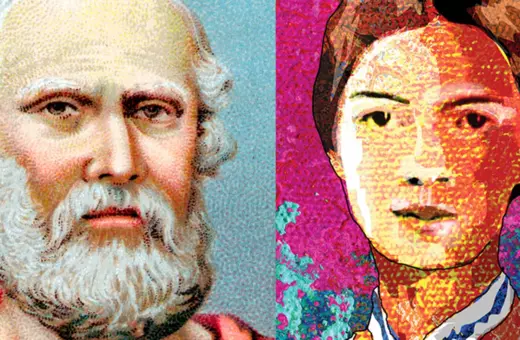A 250 cm line tattooed across the back of 6 poor Cubans living in the slums is a clear sign of exploitative art. Art seems to take cruelty and exploitation beyond the aim to shock reducing it to an expression of neoliberal indifference to the poor. Rather than this Amelia Watts argues a Utilitarian analysis of the art demonstrates that this cruelty is effective at progressing the conversation, concluding that art shouldn’t care about your morals.
The art world has a long history of pushing boundaries and challenging societal norms, often using shocking and controversial imagery to provoke audiences and prompt critical thinking. However, justifying cruelty and exploitation solely for the sake of art presents an ethical dilemma that demands examination. Utilitarian ethics, championed by philosophers like John Stuart Mill, propose that actions should maximize overall happiness and pleasure while minimizing suffering. But can this be applied to artists such as Santiago Sierra’s works such as “250 cm Line Tattooed on 6 Paid People”. This controversial piece aimed to show the lack of care that we have for those in poverty. However, paying to tattoo individuals for the self-promotion of his career and his ideology seems deeply immoral.
The application of utilitarian ethics to controversial artworks, like Sierra’s, tells us something different. Rather than just accepting immorality as an absolute by delving into the concept of the "Pleasure Monster" as a thought-provoking analogy, and examines the ethical implications of pushing artistic boundaries for the pursuit of pleasure and societal reflection, we can see that the world needs controversial exploitative art.
Utilitarianism holds that actions are morally right if they bring about the greatest happiness for the greatest number of people and wrong if they cause suffering. The Pleasure Monster represents a hypothetical creature seeking maximum pleasure regardless of the consequences for others. Critics argue that this extreme pursuit of pleasure may justify actions that are unethical or harmful from a conventional moral standpoint, raising questions about the limitations of utilitarian ethics. However, by considering the implications of the pleasure monster not just as an individual but as the collective, the benefits to all of us, we see a different answer.
___
Santiago Sierra's artwork, involving the tattooed line on the backs of six young Cubans, exemplifies the controversial nature of certain artworks.
___
Santiago Sierra's artwork, involving the tattooed line on the backs of six young Cubans, exemplifies the controversial nature of certain artworks. While shocking and seemingly demeaning, a utilitarian analysis reveals potential benefits:
1. Raising Awareness: Sierra's artwork sheds light on the dire living conditions of marginalized individuals, drawing attention to social issues and prompting discussions.
2. Igniting Empathy: The unconventional portrayal of hardship evokes empathy and compassion, inspiring action to improve the lives of the underprivileged.
3. Spurring Discussions: Controversial art fosters intense debates, leading to a deeper understanding of societal challenges and potential solutions.
4. Challenging Complacency: By confronting uncomfortable realities, such artworks challenge viewers to question the status quo and promote positive change.
5. Encouraging Reflection: The shocking visuals prompt self-reflection, leading to a reevaluation of societal attitudes and fostering compassion.
___
Art that shocks and challenges societal norms can serve valuable purposes, such as raising awareness, stimulating critical discussions, and encouraging empathy.
___





















Join the conversation